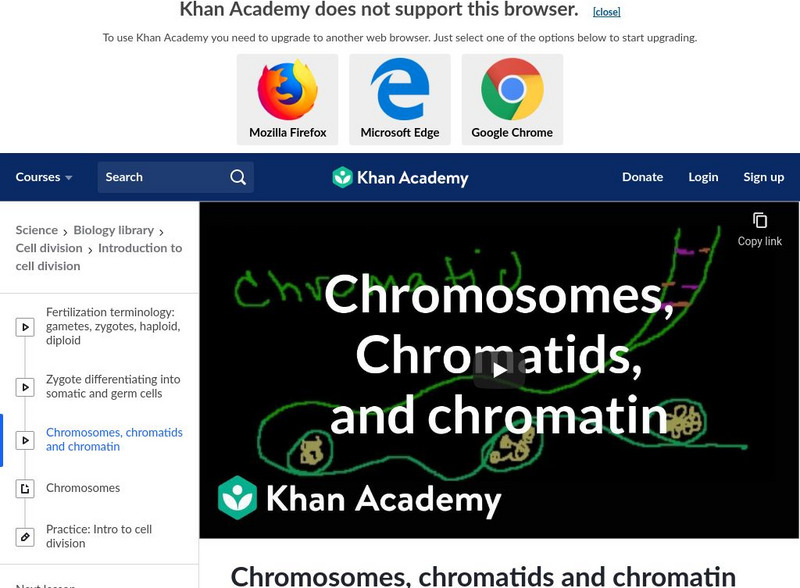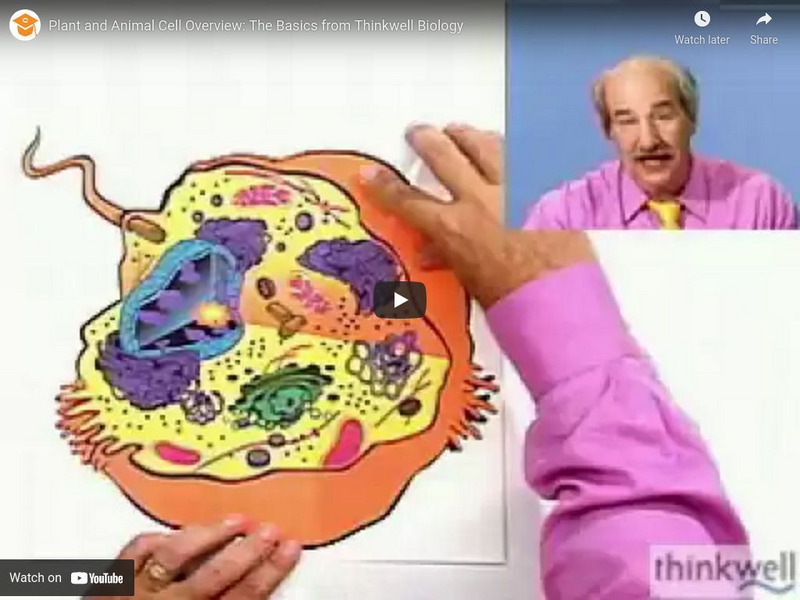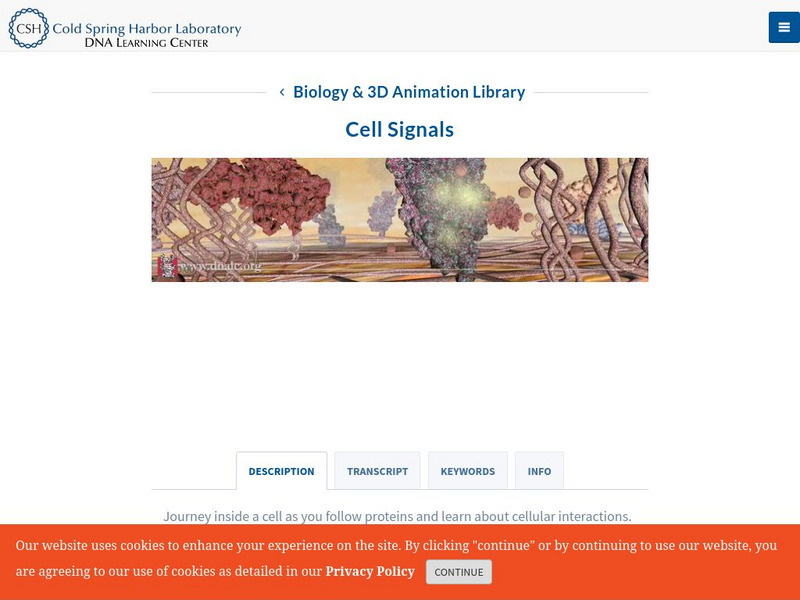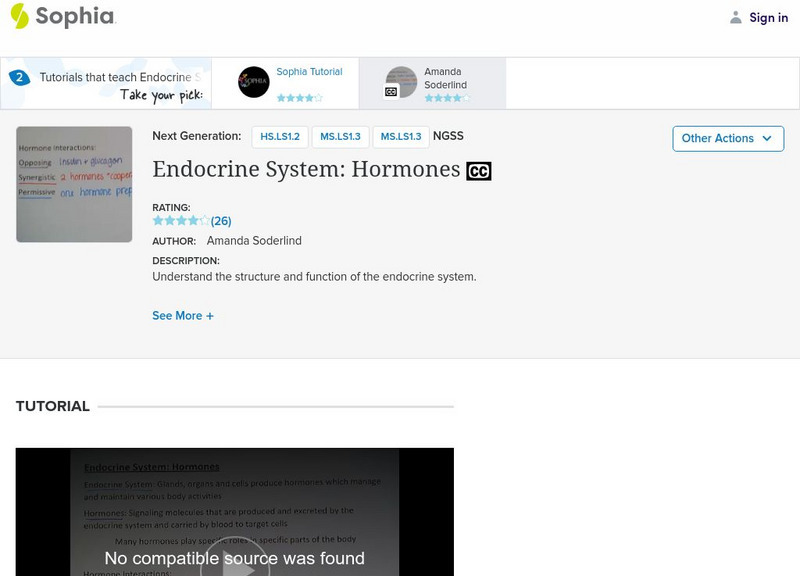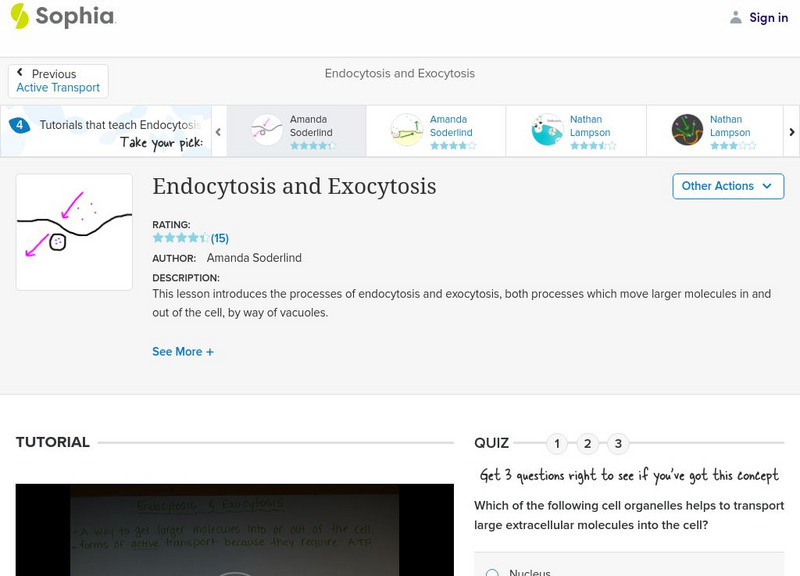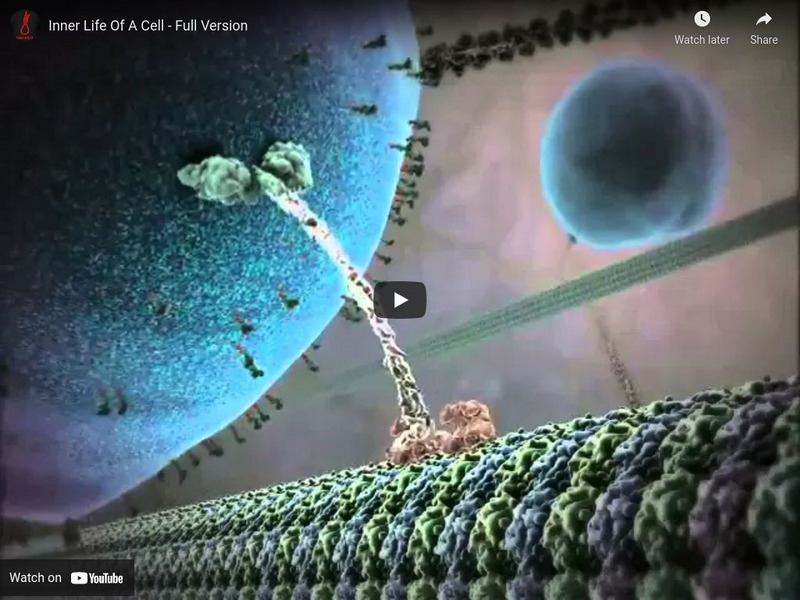Hi, what do you want to do?
TED-Ed
What Is the Biggest Single-Celled Organism?
Meet Caulerpa taxifolia, believed to be the largest single-celled organism in the world. How does it work and where is it found? Learn all about this invasive algae and why it is so successful.
Ricochet Science
Cell Junctions
A cell phone isn't used for this cell communication. Use a video resource to overview three main types of cell junctions. It provides a graphic of each type and elaborates on each with a description. The last line expands upon the...
Ricochet Science
Osmosis and Tonicity
Does your class get confused when discussing osmosis and tonicity? Explore the relationship between osmosis and tonicity to further differentiate between the two processes. The lesson concludes with a class-led discussion about...
TED-Ed
Why Do Our Bodies Age?
The physiological traits that cause our bodies to age are examined in a short, animated video.
TED-Ed
The Immortal Cells of Henrietta Lacks
Why are Henrietta Lacks' cells immortal? The answer is that no one really knows. But much has been learned because they are. Check out this video that introduces some of these remarkable discoveries.
TED-Ed
How to Grow a Bone
Is it possible to grow a human bone outside the body? Begin by taking a look at how bones grow naturally within the human body, the elements that make bones strong and functional, methods currently used to replace bones, and finally, how...
University of North Carolina
The Goldstein Lab: Caenorhabditis Elegans Movies
This resource offers a series of film clips created by scientists studying this model organism. There are movies of embryos, larvae and adults and fascinating techniques. Great to supplement advanced study of cell biology and development.
Harvard University
Harvard University: Bio Visions: Powering the Cell: Mitochondria
The inner workings of human cells are shown in this amazing animation focusing on mitochondria. The movie is accompanied by music. [2:09]
Khan Academy
Khan Academy: Structure of a Cell: Cell Size
Understand that cell size is limited by volume to surface area ratio in this video. Learn that if cells become too big it cannot take in nutrients and get rid of waste fast enough. [8:55]
Khan Academy
Khan Academy: Chromosomes, Chromatids and Chromatin
Video tutorial provides an overview of DNA transcription, translation, and replication during mitosis and meiosis while also teaching about chromosomes, chromatids, and chromatin. [18:23]
Khan Academy
Khan Academy: Apoptosis
Video lecture provides a discussion on apoptosis (programed cell death) and how it is different from cell death by injury. Also, delves into its role in development and body maintenance. [10:47]
Other
Bozeman Science: A Tour of the Cell
An in-depth look at the different types of cells, including prokaryotes and eukaryotes. Also includes a deeper discussion of each organelle and its contribution to the cell's life. [14:16]
Other
Thinkwell Video Biology: Plant and Animal Cell Overview: The Basics
A sometimes humorous look at plant and animal eukaryotic cells. Learn about specialization and compartmentalization in cell biology through this YouTube video. [9:16]
CPALMS
Florida State University Cpalms: Florida Students: Cells, Cells Everywhere!
This tutorial reviews the principles of the cell theory. The cell theory states that all organisms are made of cells. These cells are the smallest and basic unit of life. And finally, cells can only come from other cells.
Other
Molecular Movies: Cell & Molecular Animation Showcase
An organized directory showcasing cell and molecular animations for use in high school biology classrooms.
Cold Spring Harbor Laboratory
Dolan Dna Learning Center: Cell Signals
Students watch a video that follows blood cells as they are propelled through a blood vessel toward a child's injured knee. See the process of tissue repair through cell signals.
Museum of Science
Ei E: Biology Meets Technology
Students think like bioengineers as they match natural objects with technologies that have similar functions.
Sophia Learning
Sophia: Electron Transport Chain: Stage 3 of Cellular Respiration
This lesson will describe in detail the processes that occur in the ETC phase of cellular respiration.
Sophia Learning
Sophia: Endocrine System: Hormones: Lesson 2
This lesson will give an overview of the structure and function of the endocrine system including the function and interactions of hormones. It is 2 of 8 in the series titled "Endocrine System: Hormones."
Sophia Learning
Sophia: Endoplasmic Reticulum: Structure and Function
This lesson will describe the structure and function of a cell's endoplasmic reticulum.
TED Talks
Ted: Ted Talks: David Bolinksky Animates a Cell
View this video that contains 3 minutes of amazing cel animation created by David Bolinsky. In the video he discusses the project that was designed for the Molecular and Cellular Biology Department at Harvard. Included is a complete...
Sophia Learning
Sophia: Endocytosis and Exocytosis: Lesson 2
This lesson introduces the processes of endocytosis and exocytosis, both processes which move larger molecules in and out of the cell, by way of vacuoles. It is 2 of 4 in the series titled "Endocytosis and Exocytosis."
Crash Course
Crash Course A&p #2: Tissues, Part 1
In this episode of Crash Course Anatomy & Physiology, Hank gives you a brief history of histology and introduces you to the different types and functions of your body's tissues. [10:43]














